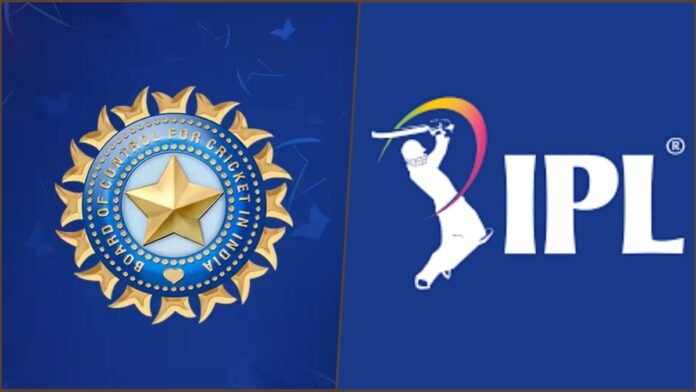
Key Points
- IPL 2026 player auction expected between December 13-15, 2025
- All 10 franchises must submit retained and released player lists by November 15
- Auction location (India or overseas) yet to be finalized by BCCI Governing Council
- Previous auctions held in Dubai (2023) and Jeddah, Saudi Arabia (2024)
- Mini-auction format likely with limited major team changes anticipated
- Chennai Super Kings may release Deepak Hooda, Vijay Shankar, Rahul Tripathi, Sam Curran, Devon Conway
- R. Ashwin’s retirement adds ₹9.75 crore to CSK’s auction purse
- Rajasthan Royals considering releasing captain Sanju Samson amid trade discussions
- Kumar Sangakkara’s likely return as RR head coach may save Sri Lankan spinners Hasaranga and Theekshana
- Cameron Green emerges as most sought-after player after missing 2025 auction due to injury
- Uncertain futures for T Natarajan, Mitchell Starc, Akash Deep, Mayank Yadav, David Miller
- Venkatesh Iyer’s retention unclear despite ₹23.75 crore price tag from KKR
Mumbai: The Board of Control for Cricket in India has set the wheels in motion for the Indian Premier League’s 2026 season, with preparations intensifying as franchises prepare for significant roster decisions ahead of the upcoming player auction. According to credible reports from Cricbuzz, the highly anticipated IPL 2026 player auction is tentatively scheduled to take place between December 13-15, 2025, marking another crucial milestone in the league’s ongoing evolution.
Critical Retention Deadline Approaching
All 10 IPL franchises face an imminent and non-negotiable deadline of November 15, 2025, by which they must submit comprehensive lists detailing both players they intend to retain for the upcoming season and those they plan to release back into the auction pool. This deadline represents a critical juncture for team management, coaching staff, and franchise owners who must make strategic decisions that will shape their squads for the 2026 campaign.
The retention announcement will provide the first clear indication of each franchise’s strategic direction, revealing which players have maintained their value and trust within their respective teams and which have fallen out of favor due to performance issues, injury concerns, financial considerations, or tactical shifts. Fans and analysts will scrutinize these lists intensely, as they offer insights into team-building philosophies and competitive strategies.
According to sources familiar with discussions between franchise representatives and BCCI officials, the auction dates of December 13-15 have gained traction as the most probable window, though the IPL Governing Council has not yet issued official confirmation or finalized the precise schedule. This timing allows franchises approximately one month between retention announcements and the auction itself to finalize strategies, identify targets, and prepare bidding plans.
Auction Location Remains Undecided
One significant uncertainty surrounding the IPL 2026 auction concerns its geographical location, with BCCI officials yet to determine whether the event will take place within India or at an international venue. This decision carries implications not only for logistical arrangements but also for the event’s atmosphere, media coverage, and accessibility to stakeholders.
The past two IPL auctions have been conducted outside India, establishing a recent precedent for overseas locations. The 2023 auction took place in Dubai, United Arab Emirates, leveraging the city’s world-class infrastructure and strategic positioning as a global cricket hub. The following year, the 2024 auction was held in Jeddah, Saudi Arabia, reflecting cricket’s expanding footprint in the Middle East and BCCI’s willingness to explore new venues.
However, sources close to franchise operations suggest that conducting a mini-auction within India would not be surprising, particularly given the typically smaller scale and shorter duration of mini-auctions compared to mega auctions. An India-based auction would reduce travel complexities, potentially lower costs, and create opportunities for greater fan engagement through local media coverage and possible public attendance options.
The final decision likely depends on multiple factors including venue availability, commercial partnerships, broadcast considerations, government relations, and strategic objectives regarding cricket’s global promotion. BCCI officials are expected to announce the location once logistical assessments are complete.
Mini-Auction Format and Limited Changes Expected
Unlike mega auctions that occur periodically and involve wholesale squad restructuring with minimal retention allowances, the 2026 edition will follow a mini-auction format characterized by relatively conservative changes to team compositions. Mini-auctions typically allow franchises to retain the majority of their existing squads while making targeted additions and subtractions to address specific weaknesses or capitalize on emerging opportunities.
This format means most established players will remain with their current franchises, providing continuity and stability that benefits both teams and fans who develop attachments to particular squad compositions. However, the mini-auction still offers sufficient flexibility for franchises to correct mistakes from previous auctions, release underperforming players, add depth in weak areas, or pursue emerging talents who have demonstrated exceptional abilities.
Chennai Super Kings: Strategic Roster Overhaul
Despite the generally conservative nature of mini-auctions, Chennai Super Kings—one of the IPL’s most successful and strategically astute franchises—appears positioned to make significant roster alterations following a disappointing campaign that saw them finish near the bottom of the standings. This represents an unusual position for CSK, historically among the league’s most consistent performers, and has prompted serious reassessment of squad composition and team dynamics.
According to well-informed sources within franchise circles, several high-profile players face uncertain futures with CSK and could be released ahead of the auction. The potential departure list reportedly includes Deepak Hooda, the versatile middle-order batsman and part-time bowler who has struggled to justify his price tag with consistent performances; Vijay Shankar, the Tamil Nadu all-rounder whose opportunities have been limited; Rahul Tripathi, the aggressive batsman who hasn’t established himself as a regular starter; Sam Curran, the English all-rounder whose enormous price tag hasn’t translated into match-winning performances; and Devon Conway, the New Zealand opener whose form has fluctuated.
These potential releases would represent a significant shift in CSK’s roster construction, suggesting that team management and MS Dhoni’s leadership group have identified fundamental issues requiring bold solutions rather than marginal adjustments. The decisions also reflect CSK’s historical willingness to make tough calls on expensive players who haven’t delivered expected value.
Ashwin’s Retirement Impact on CSK’s Purse
The retirement of legendary Indian off-spinner Ravichandran Ashwin has created an unexpected financial opportunity for Chennai Super Kings, adding ₹9.75 crore to their available auction purse. While CSK will undoubtedly miss Ashwin’s immense cricketing value, tactical acumen, and leadership qualities, the financial flexibility his departure creates enables more aggressive bidding strategies during the auction.
This substantial purse addition allows CSK management to pursue premium players in areas of need, particularly quality spinners to replace Ashwin’s contributions, middle-order batsmen who can provide stability, or impactful all-rounders who add balance. The combination of potentially releasing multiple players and gaining Ashwin’s salary allocation could position CSK as one of the auction’s most active and financially powerful franchises.
Rajasthan Royals: Captaincy Question Looms Large
Rajasthan Royals face perhaps the most intriguing and controversial decision among all franchises heading into the retention deadline: the potential release of captain Sanju Samson. This possibility has generated intense speculation and debate within cricket circles, as Samson represents both RR’s present leadership and a talented wicketkeeper-batsman capable of match-winning performances.
Sources indicate that if ongoing trade negotiations prove successful, Rajasthan might seriously consider releasing Samson despite his captaincy role. Such a decision would be extraordinary given that teams rarely release sitting captains, particularly those who have shown leadership qualities and batting prowess. The potential move suggests either that RR has identified a more desirable leadership option, that Samson’s performance hasn’t met expectations, or that financial considerations have made his retention economically challenging.
Initially, reports suggested Rajasthan Royals might also release their two Sri Lankan spinners—Wanindu Hasaranga and Maheesh Theekshana—as part of a broader squad restructuring. However, the anticipated return of Kumar Sangakkara as head coach has reportedly altered this calculus. Sangakkara, the legendary Sri Lankan cricketer and respected coaching figure, may advocate for retaining the Sri Lankan spinners given his familiarity with their capabilities and his ability to maximize their potential.
Uncertain Futures for Key Players
Beyond CSK and RR’s high-profile decisions, numerous other players across franchises face uncertain futures as retention deadlines approach. T Natarajan, the left-arm fast bowler whose exceptional yorker-bowling ability makes him valuable in death overs, faces questions about his injury history and consistency. Mitchell Starc, the Australian pace spearhead who commanded enormous fees, must prove his Indian conditions effectiveness justifies his massive salary.
Akash Deep, the promising Bengal fast bowler who has impressed in domestic cricket and limited IPL opportunities, awaits confirmation of whether franchises view him as a core player or expendable depth. Mayank Yadav, the young fast bowler who generated excitement with express pace, faces similar uncertainty despite his enormous potential. David Miller, the South African power-hitter whose finishing abilities have been crucial for multiple franchises, must demonstrate continued value despite advancing age.
Perhaps most intriguingly, Venkatesh Iyer’s future with Kolkata Knight Riders remains unclear despite his eye-watering ₹23.75 crore purchase price. This enormous investment suggested KKR viewed Iyer as a foundational player combining opening batting ability with all-round skills. However, if his performances haven’t justified this valuation, KKR might consider the difficult decision of releasing him and redistributing his salary across multiple quality players.
Cameron Green: The Auction’s Hottest Commodity
Australian all-rounder Cameron Green has emerged as the IPL 2026 auction’s most coveted player, with virtually every franchise reportedly interested in securing his services. Green’s absence from the 2025 auction due to injury created a void that teams are now eager to fill, viewing him as a transformative player who could elevate their championship prospects.
Green’s appeal stems from his rare combination of skills: genuine fast-bowling ability that can exceed 140 km/h, powerful batting capable of aggressive strokeplay, outstanding fielding athleticism, and relative youth that promises sustained peak performance for multiple seasons. This complete package makes him invaluable in T20 cricket’s strategic landscape where all-rounders who contribute across all three disciplines command premium valuations.
The bidding war for Green is expected to reach extraordinary levels, potentially establishing new auction records for overseas all-rounders. Franchises with substantial purse availability and identified needs for pace-bowling all-rounders will likely engage in aggressive bidding, recognizing that securing Green could provide competitive advantages that justify massive financial commitments.
Strategic Implications and Team Building
The approaching retention deadline and subsequent auction represent critical moments in IPL’s competitive cycle, where strategic decisions made now will reverberate throughout the 2026 season and potentially beyond. Franchises must balance numerous competing considerations including immediate performance needs, long-term squad development, financial sustainability, brand considerations, and fan engagement.
Teams that finished poorly in the previous season face pressure to demonstrate responsiveness through meaningful changes while avoiding panic-driven overcorrections that could destabilize squad chemistry. Conversely, successful teams must resist complacency and identify marginal improvements that maintain competitive advantages.
As November 15 approaches and December’s auction looms, IPL stakeholders—from franchise owners and coaches to players and fans—will watch closely as the 2026 season’s narrative begins taking shape through retention decisions and auction strategies that will define the upcoming campaign’s competitive landscape.










































